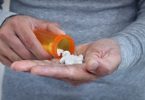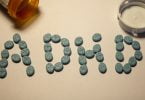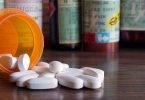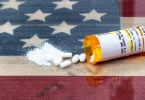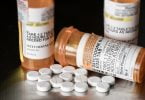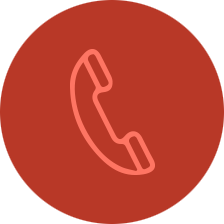It is now a well-known fact that a substance use disorder is an illness of the brain and that treatment is possible and highly effective. However, there isn’t a one-size-fits-all solution. Rather, the substance of abuse, the individual, how long the substance was used, and a variety of other factors have to be taken into consideration. What does bring all treatment together, however, is that treatment starts with detox and continues through counseling, medication where appropriate, and aftercare. Commonly, people go through treatment several times before they are able to recover.
“Drug use during treatment must be monitored continuously, as lapses during treatment do occur.”
There are two key elements to drug addiction treatment:
1. Behavioral treatment, which includes cognitive behavior therapy (CBT), contingency management, and counseling. This treatment is designed to change the way people think and respond to triggers and cravings. Sometimes, this is done by providing abstinence incentives.
2. Medication, which is particularly common in the treatment of prescription drug abuse to help people with detox and rehab. This is known as Medication Assisted Treatment (MAT).
Medication Assisted Treatment
Naltrexone, methadone, and buprenorphine are the three main drugs used in MAT. These are designed to counter the opioid effects on the brain and/or help to lessen the withdrawal symptoms and the associated cravings. This allows patients to avoid relapse. However, it should only be offered together with behavioral treatments and psycho-social support in order to be effective.
Naltrexone is a type of antagonist that stops other opioids from being effective. While used to treat addiction, most people know it because it can reverse the effects of a heroin overdose. In the treatment of prescription drug abuse, it is often provided as Vivitrol.
“VIVITROL (naltrexone for extended-release injectable suspension) is a non-addictive, once-monthly treatment proven to prevent relapse in opioid-dependent patients when used with counseling following detoxification.”
Because Vivitrol only has to be administered once per month, it is particularly good for those who find it difficult to stick to a regular schedule or who are in medically underserved areas.
Another commonly prescribed drug in MAT is methadone, which is best known for the treatment of heroin addiction. The drug is a synthetic opioid agonist that stops people from experiencing withdrawal symptoms while at the same time lowering drug cravings. Methadone has been used very successfully for over four decades. However, it can only be provided through licensed opioid treatment programs, which is monitored by the Substance Abuse and Mental Health Services Administration (SAMHSA).
“The Certification of Opioid Treatment Programs, 42 Code of Federal Regulations (CFR) created a system to accredit and certify opioid treatment programs (OTPs). OTPs provide medication-assisted treatment (MAT) for people diagnosed with an opioid-use disorder. MAT patients also must receive counseling, which can include different forms of behavioral therapy.”
Last but not least, there is buprenorphine, which is a partial opioid agonist, which means that it binds to opioid receptors and only allows them to partially activate. Buprenorphine can be prescribed by licensed physicians. Additionally, the U.S. Food and Drug Administration (FDA) has approved Sublocade, a once-monthly injection or implant of buprenorphine in November 2017.
“FDA approves first once-monthly buprenorphine injection, a medication-assisted treatment option for moderate-to-severe opioid use disorder.”
A study has been completed by the National Institute on Drug Abuse (NIDA) that compared the effectiveness of buprenorphine combined with naloxone, and extended-release naltrexone. It was found that both are equally effective once a patient starts to get treatment. However, people must detox from naltrexone, which can be difficult. Those who can make it through detox, however, generally find that it is an effective form of treatment.
Replacing One Addiction with Another
A lot of people think that prescribing medication for the treatment of prescription medication abuse is a contradiction in terms. They feel that doing so simply replaces an addiction with a new one. However, this is not true due to the fact that MAT restores brain circuits rather than disrupts them and because MAT must be offered together with therapy. This means that patients learn to restore normal social and psycho-social functioning, rather than focusing on a particular prescription drug.
MAT is now one of the most common methods of treating an opioid use disorder, which includes addiction to opioid painkillers. However, far more people should be able to access MAT and benefit from it. Unfortunately, there are many barriers to seeking treatment, which must be addressed.
“The barriers that interfere with treatment entry are a part of most substance abusers’ lifestyles, as well as the substance abuse treatment system. The BTI is an instrument with good reliability that can be used by substance abusers and assessment staff as a useful tool for helping identify barriers to treatment entry.”
It should be noted that those who seek treatment may not be offered MAT. In fact, only 18% of those who receive opioid abuse treatment receive it. One of the reasons for this is believed to be the fact that there continue to be limited treatment facilities that are licensed to provide methadone.
Another significant area of concern is that many people continue to see prescription drug abuse, and particularly prescription painkiller abuse, as somehow different from the abuse of opioids, such as heroin. This is due to two key reasons. The first is that many people mistakenly believe that prescription drugs are somehow safe.
“Parent permissiveness and lax attitudes toward misuse and abuse of prescription medicines, coupled with teens’ ease of access to prescription medicines in the home are linked to teen medicine misuse and abuse. The availability of prescription drugs (in the family medicine cabinet, in the homes of friends and family) makes them that much easier to misuse and abuse.”
The second key issue is the public perception that illegal drugs, such as heroin or other street drugs, are somehow “dirtier” than prescription drugs and that they impact the lower levels of society. This is not true, however, and prescription opioid abuse is effectively the same as heroin abuse since both are derived from the same substance and work in the same manner.


